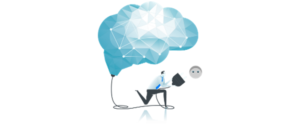In a tough economic climate, law business development means focusing on getting more work from existing clients and contacts. This means a strong and clear focus on the firm’s strengths, cross-selling and up-selling, referrals from satisfied clients, and introductions from allies. This will have a real impact on lawyer marketing and the business pipeline.
Download Sustainable Business Development for Law Firms as a pdf document
Law Business Development: A Sustainable Approach
However, the first stage in a sustainable business development programme is to set the standards and to establish the vision – to ensure that the firm’s client base is developing in line with the business plan.
Setting the Standards
Solicitors are professional people, and they respond well to being treated as such. Imposing ‘targets’ to which they should aspire is unlikely to elicit a sustainable positive response. Setting ‘standards’ together with the team concerned, to which they all agree they will conform, generates engagement and means that underperformers cannot claim unfair treatment.
The approach should be one of ‘what gets measured gets better’. If we measure number of chargeable hours, this is what people will focus on. If we want to improve lawyer marketing, we also need to focus attention on the other factors that really impact on the top and bottom lines – new client take-on; new instructions; referrals; realisation rates; billing; collections – then we will see commensurate improvements in these areas of the business pipeline.
Establishing the Niche
Service professionals can develop a more prominent reputation, and usually charge rates accordingly, when they operate in a ‘niche’ area. Developing a niche takes time, but the rewards will be worthwhile. Therefore, all key fee earners should be asked to identify their own potential niche, clearly in line with the firm’s and the team’s reputation and strategic direction.
In this way, the key people throughout the firm develop a clear vision as to what they plan their client base will look like, and this can form the basis for a ‘gap analysis’, comparing the vision with the current situation – and identifying what resources and training are required to enable achievement of the vision.
Sustainable Sources of Business
Closing the gap between where the firm is, and where it wants to be, involves a systematic programme of training and development in five key areas:
• Repeat work from existing clients
• Introductions
• ‘Keep in Touch’ campaign
• Strategic Alliances
• Collateral
You will note that these areas all require a significant time investment, but relatively little financial investment up front (as compared with, say, advertising or PR).
These sources underpin the methods of developing business in our Profitable Partnerships Programme, which helps fee earners to measurably and sustainably improve their billing capacity.
Please feel free to contact me for further advice.
Simon White



